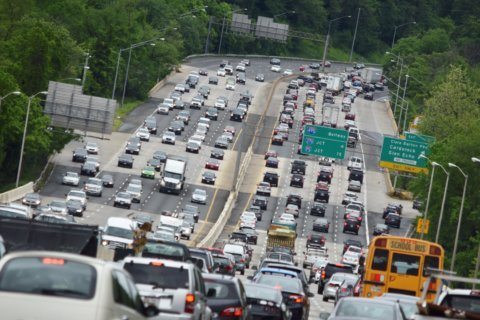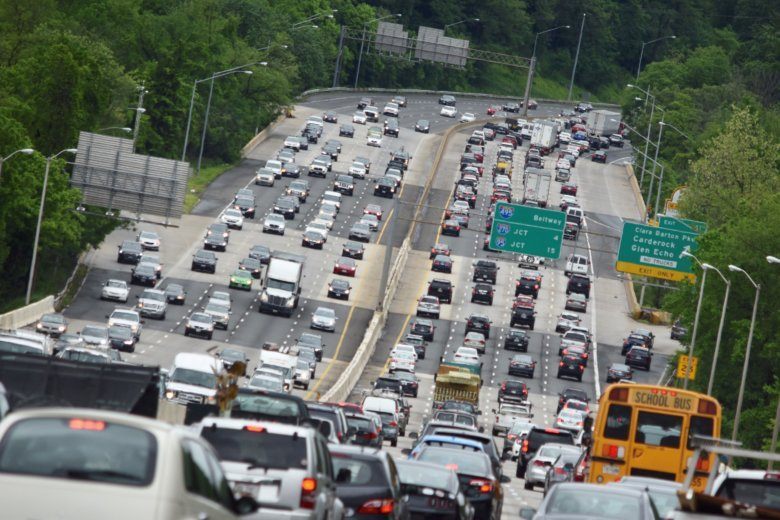
Some of the D.C. region’s most important highways are suffering from traffic bottlenecks and deteriorating surfaces, a new report on the nation’s aging road infrastructure finds.
In its 2020 interstate highway report, TRIP, a D.C.-based national transportation research group, identified Maryland as the second-highest-ranking state for congested urban interstates.
Two of the region’s major highway interchanges on the Capital Beltway were found to be bottlenecks for the nation’s long-haul truckers:
- Interstate 95 at northbound Interstate 495 in Maryland;
- Interstate 495 at Interstate 66 in Virginia.
There isn’t much interstate highway within the District of Columbia, but TRIP said the following:
- 54% of D.C.’s interstate highway pavement is in poor condition;
- 5% of Maryland is listed as poor;
- 2% of Virginia’s interstate pavement is poor.
“The strong economy in the area is continuing to put more travel on the Washington metro and also the Baltimore area transportation system,” said TRIP Policy and Research Director Rocky Moretti.
“Most critical needs will be the reconstruction of a majority of the nation’s interstates highways, bridges, pavements and interchanges.”
The report said 82% of Maryland’s urban interstates are congested during peak periods, compared to California’s 86%.
Fifty three percent of Virginia’s urban interstates are congested during peak periods. Eighty nine percent of D.C.’s meager stretches of interstate highway are congested during peak periods.
It also found the interstate highway system is still experiencing travel growth year after year, exacerbating problems.
Between 2000 and 2018, vehicle miles traveled on interstates — the amount of travel for all vehicles — increased 23% in Virginia, 18% in Maryland and 8% in DC.
TRIP, a nonprofit funded by groups including insurance companies, equipment manufacturers and businesses involved in highway and transit construction, seeks for Congress to approve a well-funded surface transportation program for the new year, beginning Oct. 1.









